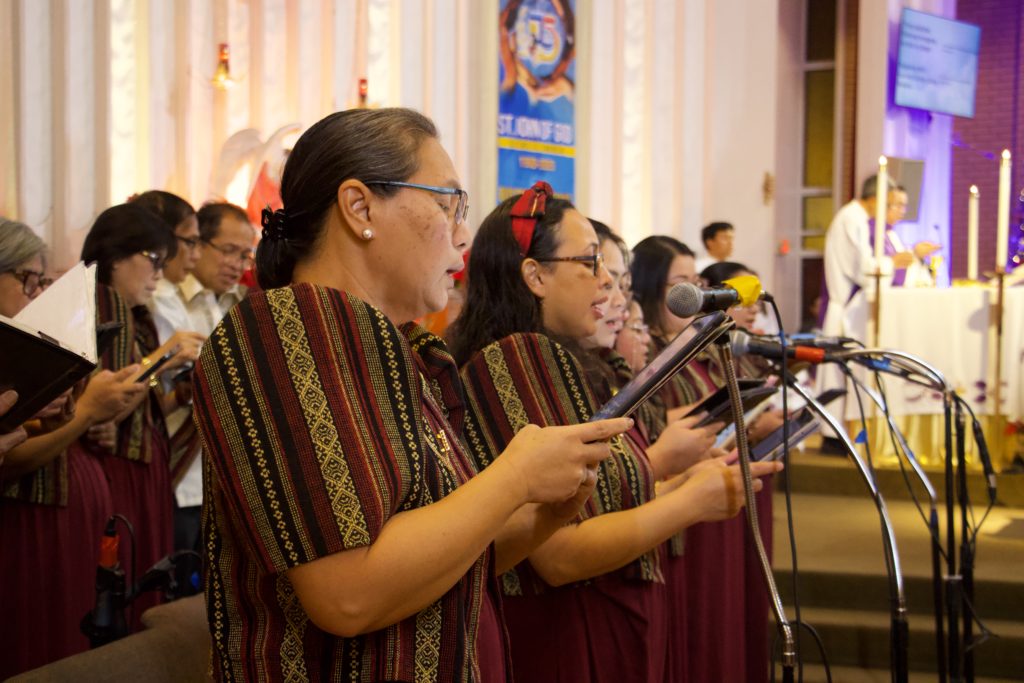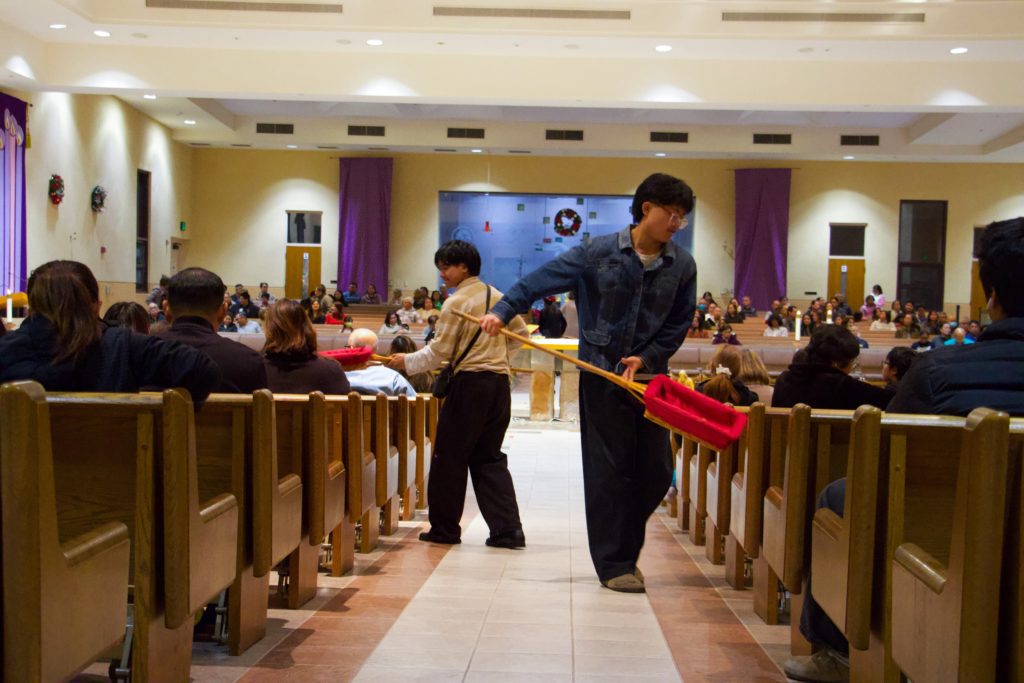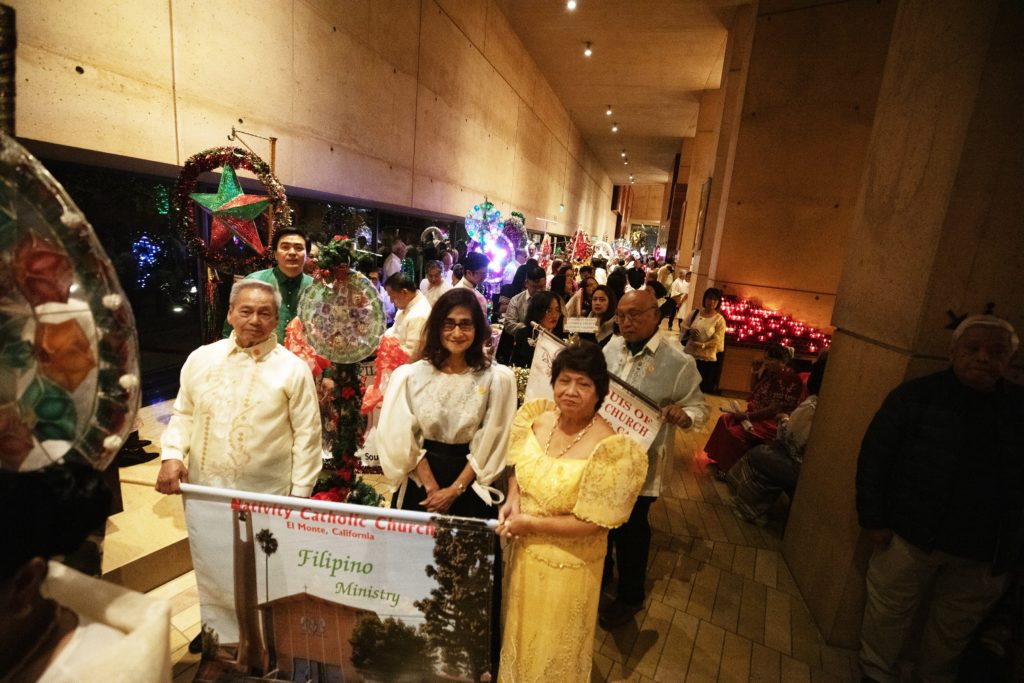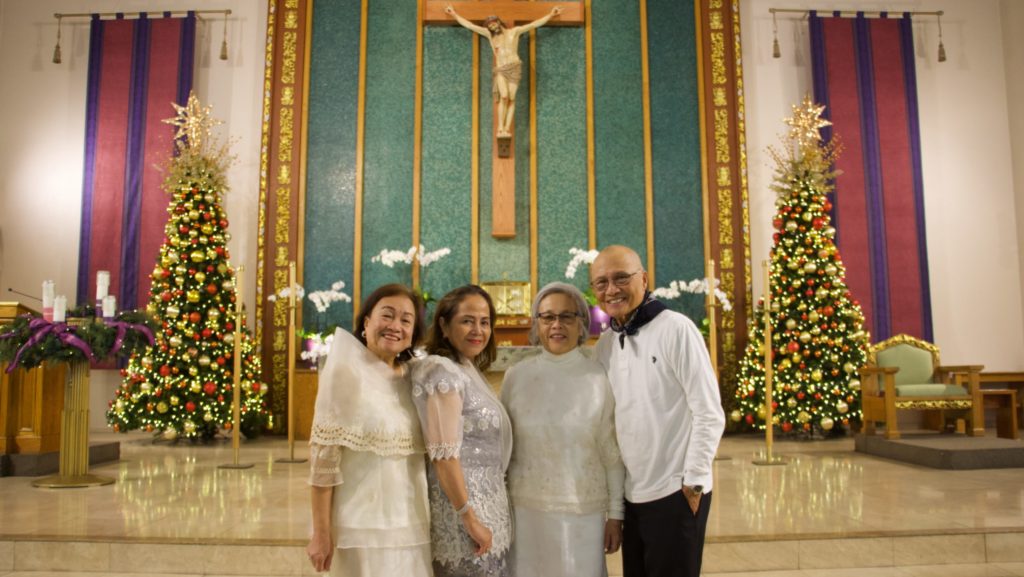At Holy Family Church in Artesia, Simbang Gabi was celebrated before dawn, the Misa de Gallo (Mass of the Rooster) starting at 5 a.m. Every church pew was occupied by mostly Filipino families who anticipated the preparation of Christmas.
Some women wore traditional white clothing from their homeland, while the Knights of Columbus choir wore a Salakót — a traditional Filipino hat — (at least a portrayal of one) hanging from their backs and a colorful bandanna wrapped around their necks as they sang throughout the Mass.
For Kirk Bravo, a young adult attending Holy Family, it was a sacrifice to wake up at 4 a.m. for the early-morning Mass, but it was worth it.
“The sacrifice comes from the love of God and the love for Mass and the Eucharist, where I just need to do it. I am not required to do this,” Bravo said.
“It doesn’t feel like Christmas unless you begin with Simbang Gabi.”

Simbang Gabi is a Filipino tradition of a nine-day novena Mass in preparation for Christmas. Before the 17th century, Spanish missionaries introduced Christianity to the Philippines. The Masses were scheduled for farmworkers, leading to the tradition of Misa de Gallo, as the Mass was held before dawn.
Today, most Filipino Catholics in the archdiocese celebrate the evening version of Simbang Gabi, which takes place from Dec. 15 or 16 to Dec. 23 or 24.
But at Holy Family, a parish with a large contingent of Filipino descent, the pastor, Father John Cordero, opted for the early-morning festivities thanks to the devotion of his church’s parishioners.
“You need a pool of committed volunteers to help and serve with a nine-day Misa de Gallo,” Cordero said.
The Masses were conducted in English to foster inclusivity, ensuring the message resonates with a broader audience and strengthens the spirit of unity. After Mass, everyone gathered for fellowship, and traditional Filipino foods like rice cake, soup, and tea.
Some carried a petition for God to answer their deepest prayer requests, while others celebrated attending Mass and thanking God.
“I still have pain [in my back], but I rejoice that I am here,” said Mafalda Canlas, an elderly parishioner at Holy Family who was happy to attend a Misa de Gallo with her family and friends after being unable to attend a Simbang Gabi Mass since 2018.
Over at St. John of God Church in Norwalk, Christine Cayetano, a choir director at the parish, helped celebrate Simbang Gabi by bringing a musical focus.
“When I was a child, my grandma brought me to church and asked me to play the piano. Then I joined a choir, and that’s where it all started,” she said.

Since then, Cayetano has been actively playing at Sunday Masses, especially during Simbang Gabi. She helps connect Filipinos with their faith through liturgical music while having her singers perform in Tagalog.
At the end of a Simbang Gabi Mass, a girl approached Cayetano.
“She came from the Philippines, and she was in a choir there,” Cayetano said. “I was the same. When I came here [to the U.S.], I looked for a choir that sang Tagalog.”
The familiar sounds of Filipino hymns during the Mass evoked deep nostalgia and joy for many parishioners. Songs like “Ang Pasko Ay Sumapit,” which translates to “Christmas Has Arrived,” and “Halina Hesus, Halina,” which translates to “Come, Jesus, Come.”
“I look forward to listening to the choir during the Filipino Mass,” Michelle Gomez, a Filipina Catholic, said. “I hear songs sung in Tagalog, and I enjoy it here.”
“I can also sing along with them,” added Beatriz Gomez, Michelle’s mother, who sat next to her daughter and granddaughter. The family enjoys celebrating Mass at St. John of God because the service and choir remind them of their home in Manila.
For both women, the importance of continuing the tradition of Simbang Gabi resonated deeply.
“She was born here, and I want my daughter to continue the tradition,” said Michelle, on the importance for her daughter to connect and understand her Filipino Catholic roots.

Similar to Father John Cordero, Father Francis Ilano, pastor at St. Philomena Church in Carson, was born in the Philippines and they have fond memories of parols — a Christmas lantern. Some parishes have star lanterns displayed near the altar or have them as decorations around the church.
“In the old days, in the absence of streetlights, people would hang lanterns on the house to light the way to the church for the people attending the novena,” Ilano said, “which became the symbol of the Star of Bethlehem.”
“Now, the star parol has become one of the symbols of Simbang Gabi, the Christmas season for Filipinos all over the world.”

